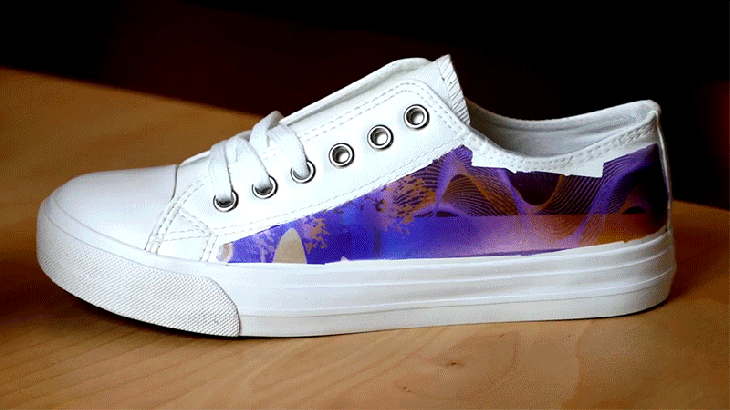This Color-Changing Ink Can Change On Lighting Conditions
Dhir Acharya - Sep 14, 2019

Inspired by creatures like chameleons that are masters in terms of changing colors, at MIT have created a spray-on ink with the ability to change colors.
Inspired by creatures like chameleons that are masters in terms of changing colors, researchers of Computer Science & Artificial Intelligence Laboratory (CSAIL) at MIT have created a spray-on ink with the ability to change colors, patterns, and designs when it’s blasted with different light wavelengths.

Dubbed PhotoChromeleon, this system relies on a set of photochromic dyes (working like glasses that darken automatically when exposed to sunlight). The dyes are applicable in almost all objects with standard painting methods such as sprays and brushes. The research team developed the ink by mixing yellow photochromic dyes, magneta, and cyan together to generate a solution working like paint, but it’s invisible unless exposed to certain light show.
Each colored dye reacts to a different wavelength of light, so the research team uses three light sources and they could selectively deactivate and activate three ink colors. As a result, they could generate complex patterns, specific shades, as well as high-resolution pictures.
When they coated a phone case or a shoe with this ink, they put it in a box with a UV light along with a projector. Now, the projector will shine pre-determined patterns and pictures onto the object with different wavelengths so that the colors in the ink are activated, while the UV light will reset this ink, which erases all designs and colors. The activation process takes between 10 and 40 minutes depending on the shape and size of the object, as well as the complexity of the reproduced colored design.
The researchers are still working to recreate photochromic dyes matching every color used in current printing processes. They are now closed, but haven’t got there yet so printing a photo on a shoe can cause a weird tint. Additionally, the team wants to work with material scientists so that they can improve their dyes’ color spectrum, this would make the product have countless applications including camouflage to use in the military that can get updated to match the new environment, color-changing cars, or easy-to-customize clothing to match an outfit.
Featured Stories

Features - Jul 01, 2025
What Are The Fastest Passenger Vehicles Ever Created?

Features - Jun 25, 2025
Japan Hydrogen Breakthrough: Scientists Crack the Clean Energy Code with...

ICT News - Jun 25, 2025
AI Intimidation Tactics: CEOs Turn Flawed Technology Into Employee Fear Machine

Review - Jun 25, 2025
Windows 11 Problems: Is Microsoft's "Best" OS Actually Getting Worse?

Features - Jun 22, 2025
Telegram Founder Pavel Durov Plans to Split $14 Billion Fortune Among 106 Children

ICT News - Jun 22, 2025
Neuralink Telepathy Chip Enables Quadriplegic Rob Greiner to Control Games with...

Features - Jun 21, 2025
This Over $100 Bottle Has Nothing But Fresh Air Inside

Features - Jun 18, 2025
Best Mobile VPN Apps for Gaming 2025: Complete Guide

Features - Jun 18, 2025
A Math Formula Tells Us How Long Everything Will Live

Features - Jun 16, 2025
Comments
Sort by Newest | Popular